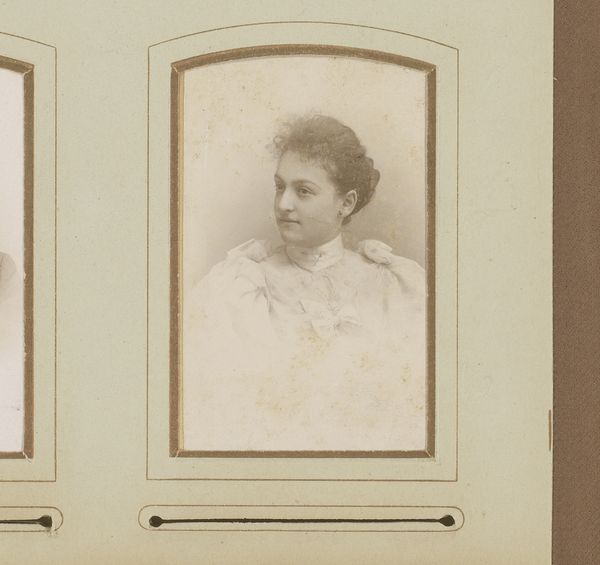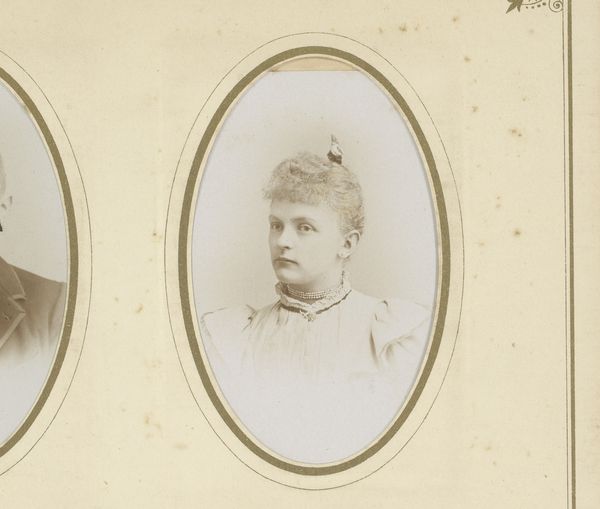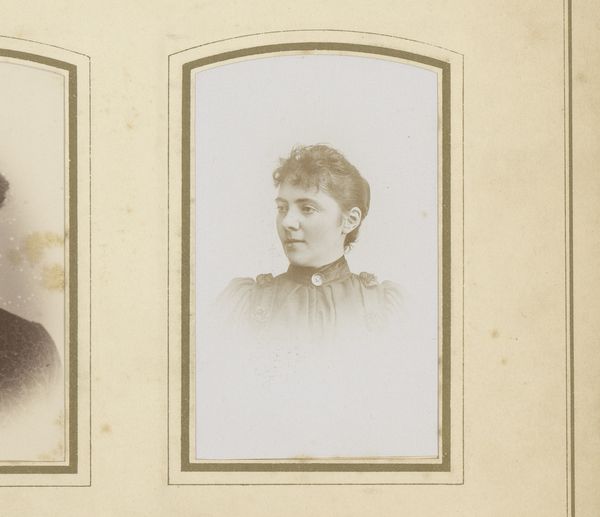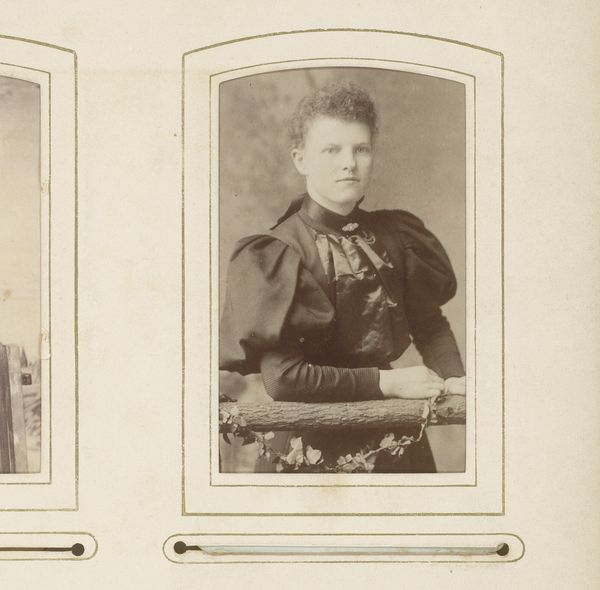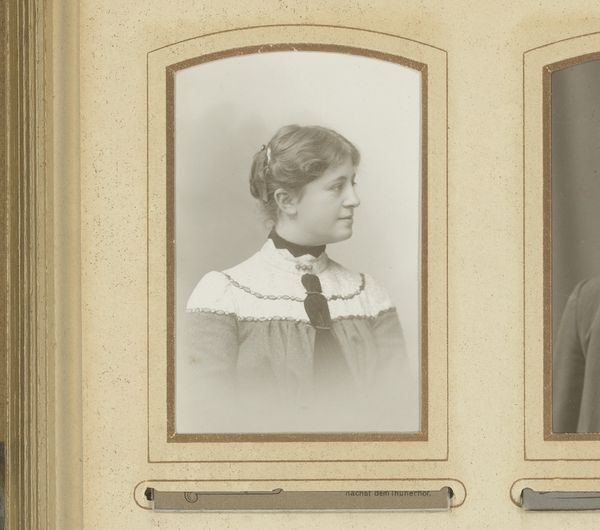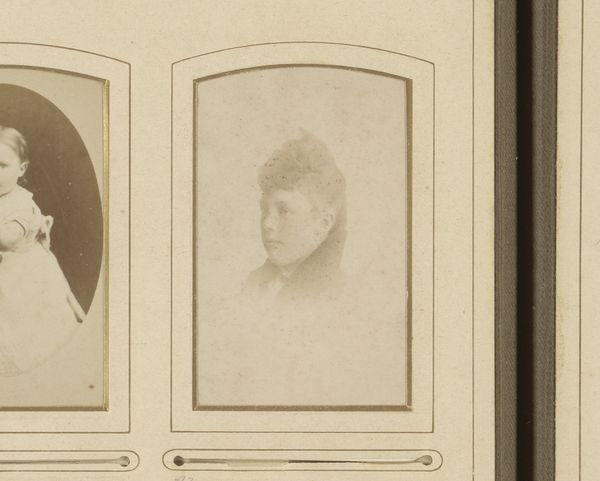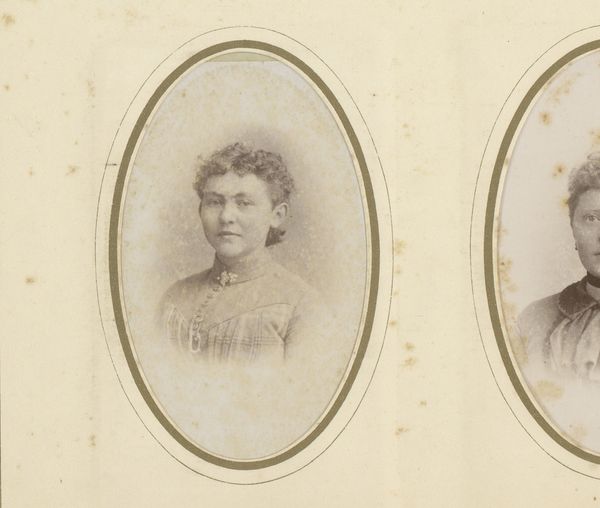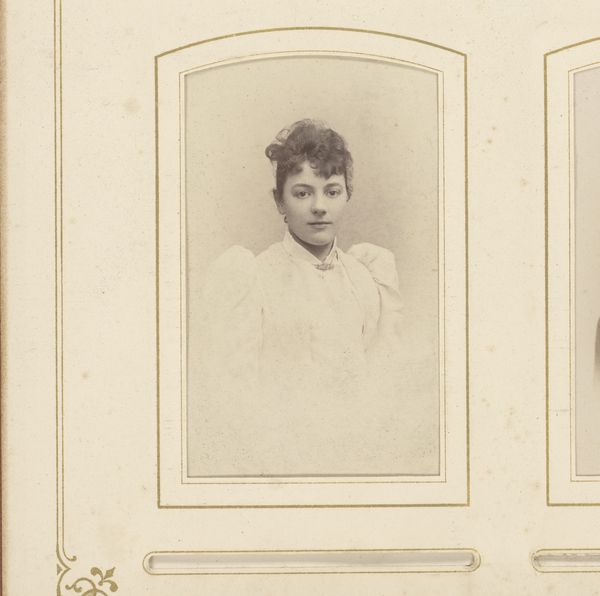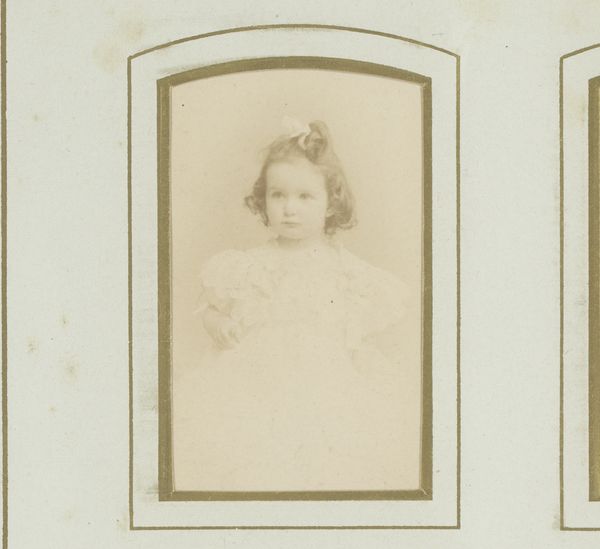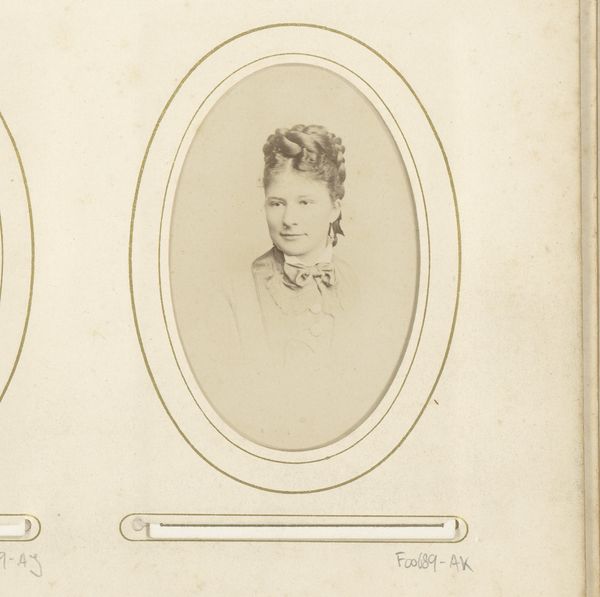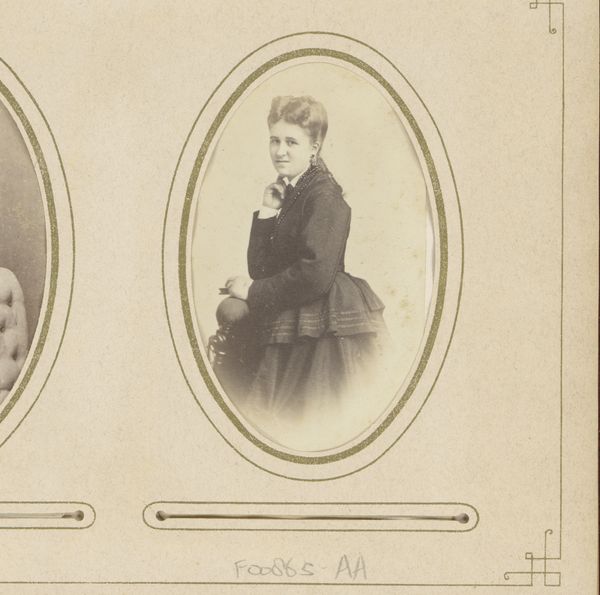
photography
#
portrait
#
photography
Dimensions: height 87 mm, width 53 mm
Copyright: Rijks Museum: Open Domain
This is a photograph made by Benjamin Sanders sometime in the mid-to-late nineteenth century, likely using the albumen print process, which was common at the time. The image’s sepia tones are a direct result of this process, where the paper is coated with albumen, or egg white, and then silver nitrate. This creates a light-sensitive surface. The photograph would have been developed using a wet collodion negative, and then toned with gold chloride to achieve its final color and stability. In a portrait like this, the material qualities are as important as the subject. The smooth surface, the subtle gradations of light, and the overall warmth of the image contribute to its aesthetic appeal. The use of albumen printing also speaks to the burgeoning market for portraiture during this era. Photography became more accessible, allowing a wider segment of the population to participate in visual culture. Looking at photography with a craft-oriented lens helps us appreciate both its artistic and social dimensions. It also challenges the traditional hierarchy between fine art and mass production.
Comments
No comments
Be the first to comment and join the conversation on the ultimate creative platform.
